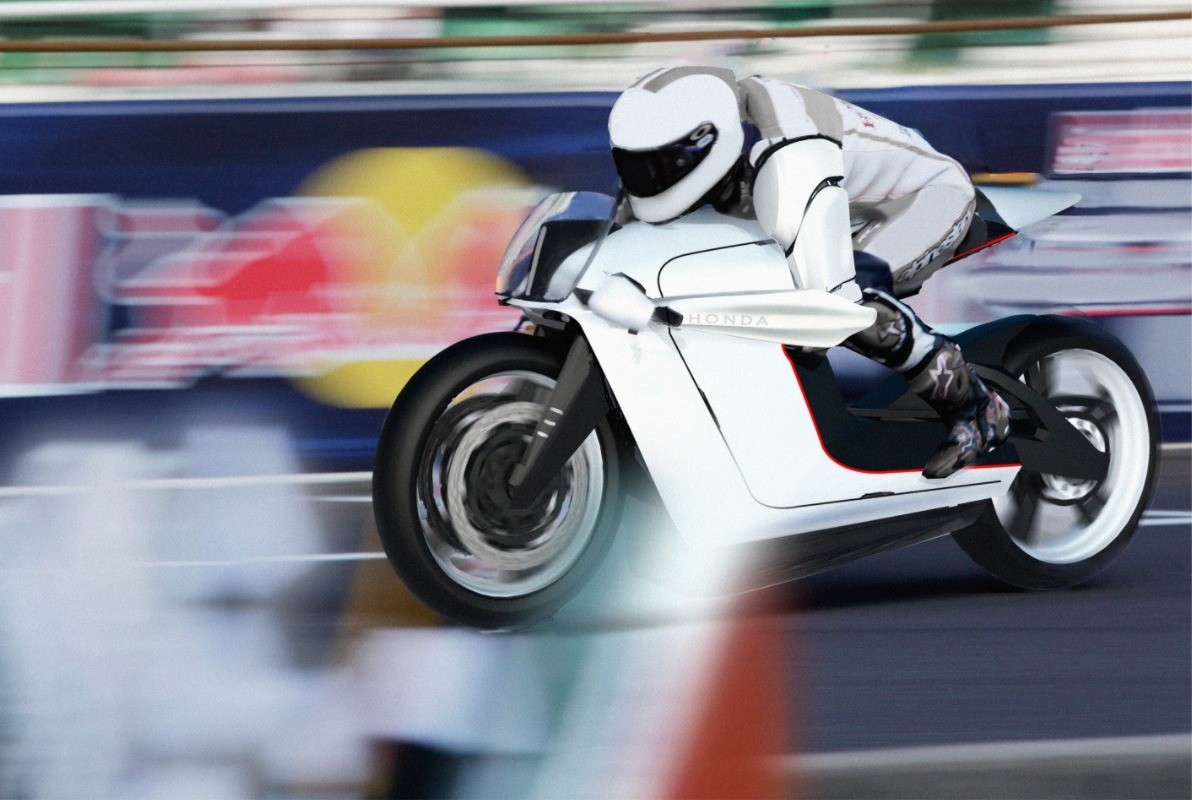
by Cristian Curmei from https://www.autoevolution.com
You love motorcycles, and you love racing them. But life sometimes throws things at us that take away some of our most treasured abilities. This is the story of how a concept could bring a second chance to disabled amputees.
So you’re a Moto GP racer. Last season, while trying to overtake the soon to be second place racer, your rear tire was clipped from the outside and you were thrown over the bike. Not too big a deal, as you’ve been through it before. But this time you somehow end up underneath the bike and are dragged till you pass out.
You wake up in the hospital, with doctors telling you that the only other choice they had was to let you pass on. You try to move but you can seem to prop yourself on your left arm. Looking to your left, you see that there is no left arm to hold you up any longer. You break down in tears knowing you’ll never again experience the track or life as before.
That’s most likely the kind of story that gave way to this concept by Tom Hylton. This two-week project was designed to offer a second chance to amputee riders. It is a two-part unit, and since we’ve recently introduced the arm into the stories, it’s now time for the bike.
The entire design includes the modular Honda robotic arm, which is specifically tuned for motorcycle use, but also this wonderous beast upon which a rider is placed.
What we are looking at is a self-balancing design that can stay upright without any sort of assistance. Behind its self-balancing trick is similar technology to the BMW Motorrad Vision Next 100. But this isn’t about BMW. It’s about how Honda could meet a need for a very niche market.
The design behind it is quite simple. As it never made it past the conceptual stages, there really isn’t much to go on. We know that the design is made for the track, so features that offer aerodynamics, strength and speed are surely in the mix.
A large and low front end leads to a lifted rear and rider position much like on a GP bike. While a low and wide bottom offers a low center of gravity to help keep the bike stable during turns.
At the front of the bike you’ll see that it feels a bit off as one of the handlebars is missing. It’s all in the works. Remember that the arm and motorcycle are designed for one another, so the area that’s missing the handlebar is designated for the arm function. One of the cool ideas behind this setup is that once the rider connects to the bike through that arm port, the bike and arm open a communications channel where an exchange of information will also affect the rider.
Based on the needed speed or angle of the rider, the arm should position itself in such a way as to optimize riders body position.
As we look at the bike we also see a long ride outline. This outline highlights the riding position. It starts up on the seat and drops down along the body to where we find grooves cut into the frame so that your knees are protected, and the body streamlined. At the rear, the feet rest on part of the frame rather that pedals.
We’re also told that the bike is designed as an EV and the rear motor is powered by a large battery hidden within the frame.
Now the design shows us that it’s meant for much more than just the track. We are shown a future where she can be ridden through snow covered hills with ice spikes.